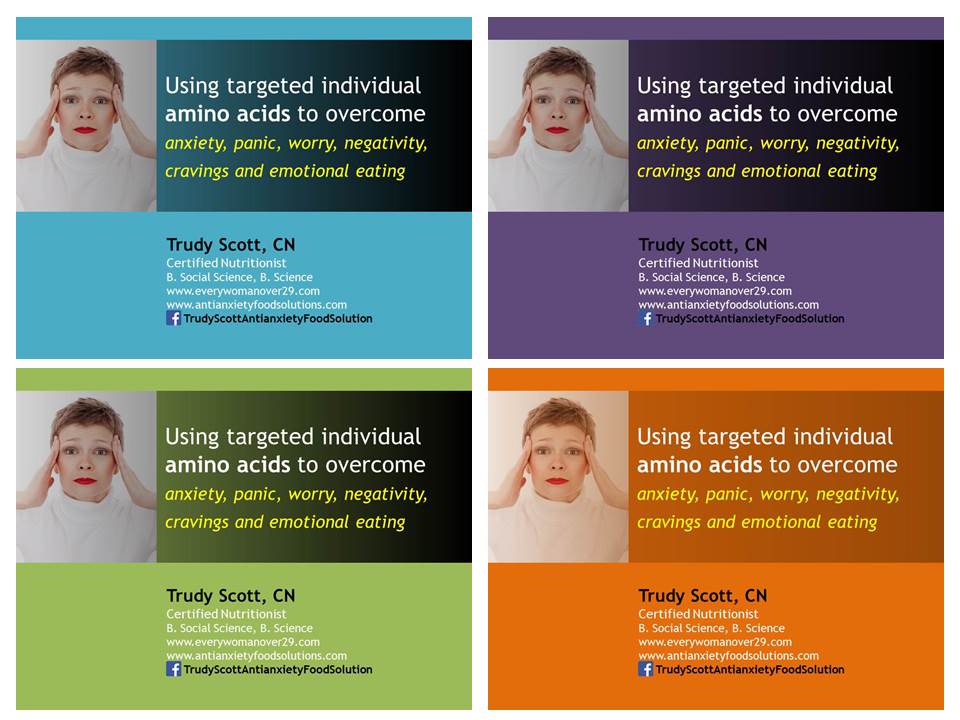Does the NFL Have a Concussion Problem? Graphs Tell the Story.
March 23, 2015Could Donald Trump Ever Be President? Graphs Tell the Story.
August 26, 2015I was watching a YouTube video recently on nutritional supplements (long story!) and saw the speaker had used this title slide. I immediately knew what was wrong with it and how to fix it. So as an educational opportunity, I wanted to share my step-by-step process.
These types of title slides are common among non-professional designers:
- Lengthy title that is center-aligned
- Lengthy speaker biography that is crowded and hard to read
- Clip art photo slapped artlessly on the page
- Gradient background (or some template background) for that extra pop!
It looks amateurish, doesn’t it? And yet, it could look very professional if you know what to look for and how to fix it. Let’s go step-by-step fixing this title slide.
1. Alignment
Always pay attention to alignment. That means everything on your slide should share an invisible border with at least one other thing on your slide. Center alignment is a killer because it destroys your alignment. On this slide, nothing really lines up and so everything seems to be slapped on messily.
I’m always going to align my text on the left. There are some times you can break this rule, but most of the time your slides will immediately look better with left alignment. I’m going to place the picture off to the side for now (we’ll deal with it later).
2. Text Variety
Right now the text looks overwhelming to read. That’s because it’s all the same size, so the eye doesn’t know where to land. Instead, we want to give the eye clear landing spots by using variety and contrast in text treatment.
In the title, for instance, we have four lines of text with no contrast. We can introduce contrast by 1) bolding some keywords and 2) italicizing the emotional words.
In the biography, we can bold the speaker’s name and make the font larger. The rest of the text we can make smaller, and white, so it whispers.
There are several calls-to-action in the biography, including two URL’s and a Facebook page. I 0nly want to highlight one of them. Otherwise, they are all competing for attention. I’m going to use a technique where the last line (call-to-action) has the same text treatment as the first line (speaker’s name) like a set of bookends. Finally, we don’t intuitively know what “FB” means, so I’m going to replace that with a Facebook icon.
Do you see how adding variety to the text treatment makes it easier to read and more visually interesting?
3. Integrate the Picture
The presenter is on the right track to add a picture to the title slide. Pictures engage audiences, and especially pictures of people. But its placement is awkward, just wherever there is some blank space on the slide. It looks “bolted on”. Instead, I want it to be integrated more naturally with the page.
The rule of thumb is I want people to see the picture before looking at the text. There’s a ton of brain research behind this but basically we want to engage people emotionally (picture) before engaging them logically (text). The eye naturally starts in the upper left, so I’m going to place the picture in the upper left. Then it will naturally read left to right to the title.
I’m also going to rework the title a bit more, adding even more contrast, by making the emotional words smaller and adding some color. See how things really start to pop when you have contrast and variety in your text? See why it’s such a mistake to have all the text the same size and color?
4. Gradient Box
There’s a bit of a hard border between the picture and the text. The picture has a white background that ends suddenly. It feels like a harsh transition. One handy tip I like to use is a semi-transparent box that goes from fully transparent on the left to fully dark on the right. I’ve created a video showing how you can make these.
The effect is to marry the text and picture better. You also have a darker background for the text to stand up against (I turned the larger title text white).
5. Color
The layout is better. But now I’m thinking about color. Right now we have a gray background. Gray can be used artfully but it also tends to be a somewhat depressing color. Maybe that’s the mood this speaker wants to set. But since she’s talking about anxiety, worry and food cravings, depressing doesn’t seem to capture it.
There is a ton of research showing that different colors subtly create different moods in the audience. I want to be more purposeful here. What mood do I want in my audience, and what color can help to set that? You can see how different colors convey different moods:
Any of these colors creates more of a mood than the gray, and makes the slide look more professional. Any of these colors makes the slide “prettier”. But the choice comes down to: what mood do you want to set?
- Blue makes you feel calm and that’s not what we’re trying to say.
- Purple conveys prestige or luxury, again not what we want.
- Green is also a calming color, and suggests health and growth and vitality. It’s a reasonable choice for a talk about health.
- Orange makes you feel a bit fidgety, and maybe even a little hungry. Bingo! Anxious and hungry is the topic of our talk, so let’s go with that!
6. Textured Background
Most slides have a solid color background, and that’s fine. Some use a gradient fill to add some more polish. Still others go for a template background, which can often be too much.
But I like to add textured backgrounds. Gradients seem a bit artificial, while textures feel more organic. Gradients seem like you’ve seen them before, while textures feel new and creative.
There are lots of places to find textures and I created this video showing how to make textured backgrounds. But just go to sites like Pixabay.com or Compfight.com and search for “texture”. Or use a search term like “cloud” or “paint” or “sand” or “water” to get some interesting photos with texture.
I found this texture at Pixabay.com and just recolored it using Picture Tools > Format > Color in PowerPoint. There’s a sense of chaos in the randomness that reinforces the idea of anxiety, panic and worry that complements this presentation’s topic.
By the way, Pixabay is my favorite new site for finding pictures because they have lots of high-quality pictures, you can use them free even for commercial purposes and — best of all — you don’t even have to add the author’s attribution. You do have the option to pay the author, but it’s voluntary.
Good luck with your presentations and check out my book Speaking PowerPoint if you found this useful! Or, if you want your staff to learn to use PowerPoint this well, consider having me in to conduct an onsite workshop.
About the author: Bruce Gabrielle is author of Speaking PowerPoint: the New Language of Business, showing a 12-step method for creating clearer and more persuasive PowerPoint slides for boardroom presentations. Subscribe to this blog or join my LinkedIn group to get new posts sent to your inbox.









4 Comments
It’s unfortunate that some speakers still think website URL should all be in lowercase. If your website name is long then it’s because you have a statement defined as URL instead of a single word. To make it easy for your audience to remember your website you should spell it in CamelCase on your slides.
So, http://www.everywomanover29.com should be http://www.EveryWomanOver29.com
and
http://www.antianxietyfoodsolutions.com should be http://www.AntiAnxietyFoodSolutions.com
It’s easily readable and takes less than a second to recognize compared to more than 4-5 seconds if in all lowercase during which speaker is still speaking but individual is trying to figure out website and not actively listening.
Hi Parag – good catch! I didn’t know the term ‘CamelCase’. That’s a good addition to my vocabulary.
—
Bruce Gabrielle
That’s a great walk-through of your thought process, Bruce! Thanks for the insight!
Great makeover Bruce!
I did a similar makeover of a title slide a while back, so I can relate to you adding contrast to the text, and putting the title and photo into a “belly band” as I call it.
I like the colour and texture you added to the slide, which give a really professional finish. My take on the photo was different though – I think it’s less important than the text, so put it on the right side of the slide.
Like you, I used left-aligned text, but someone commented to suggest using centred text. So I tried it, and I think it works better (when there’s very little text).
There are also comments from Rick Altman and Ellen Finkelstein, among others. Would be fascinated to hear your opinion too.